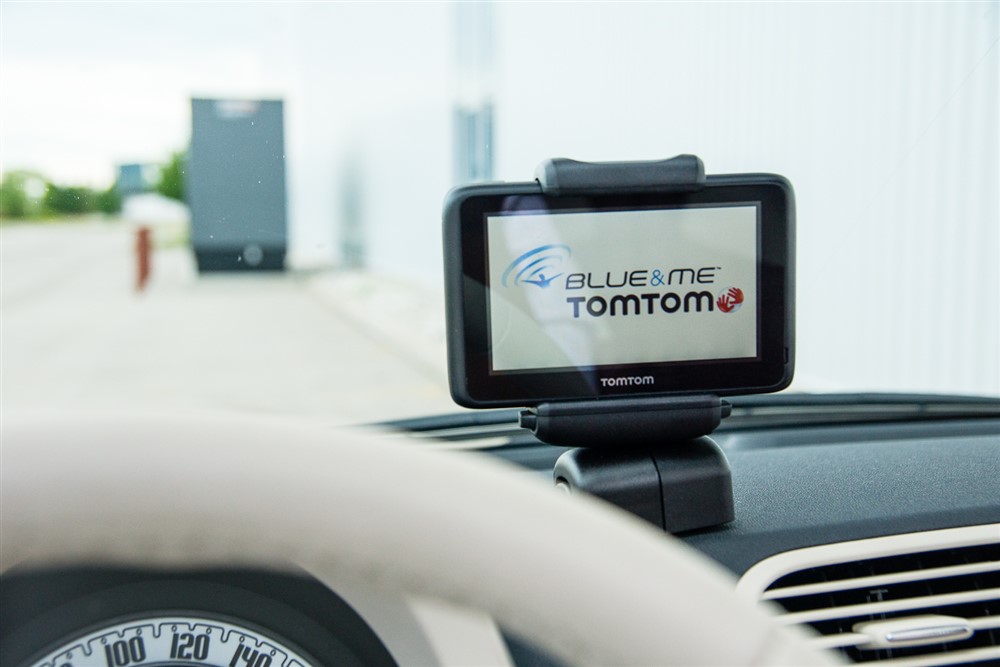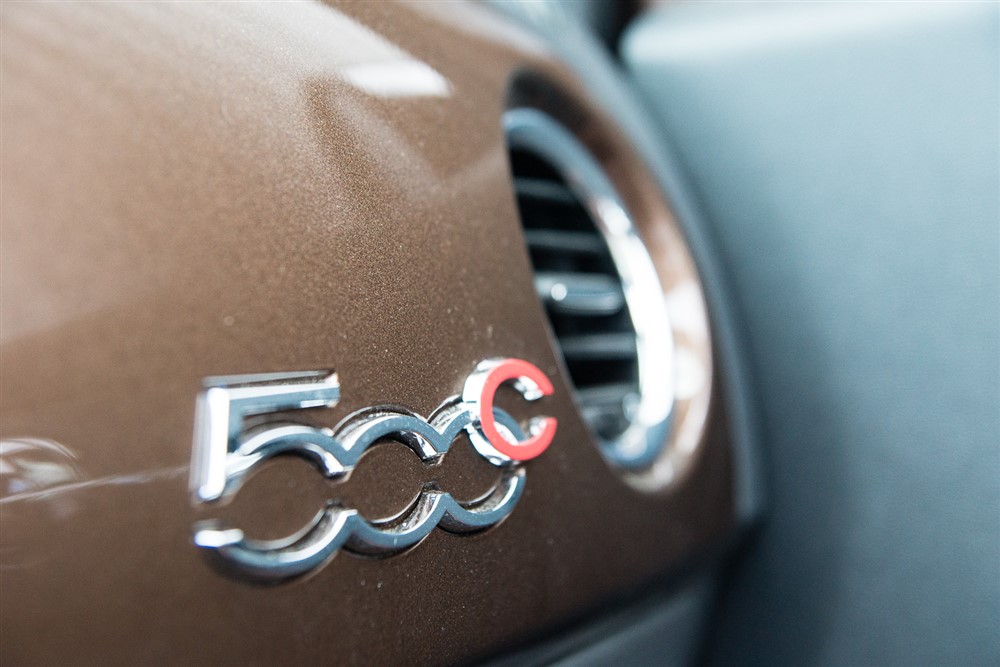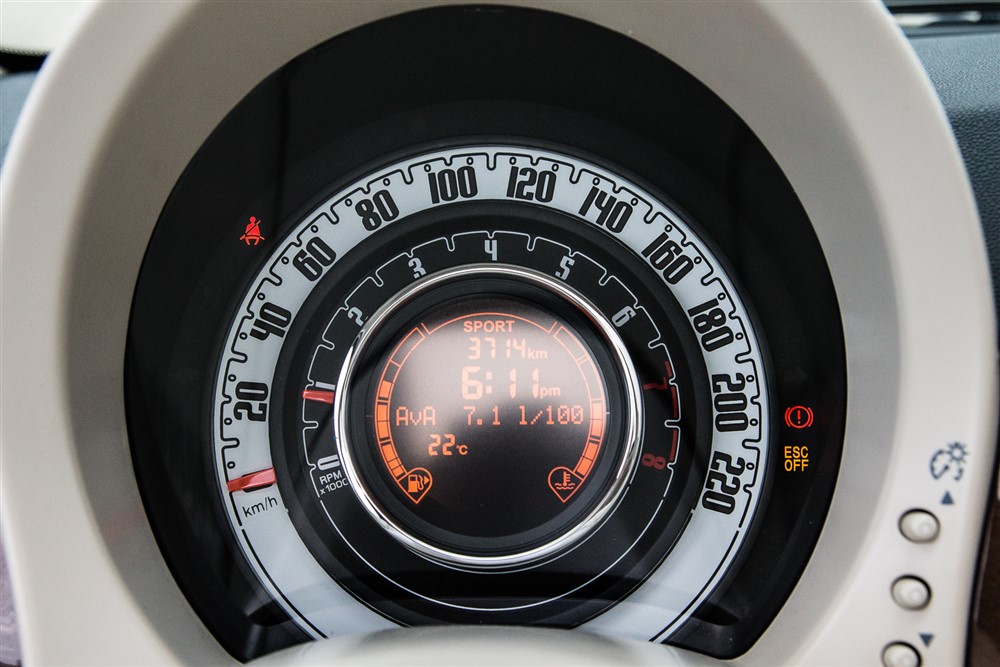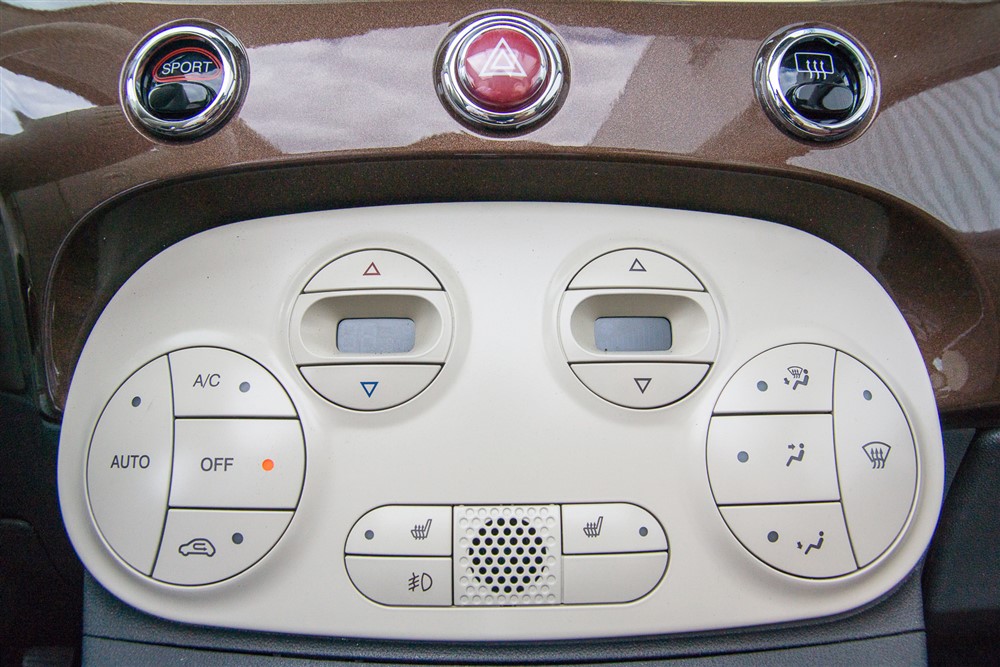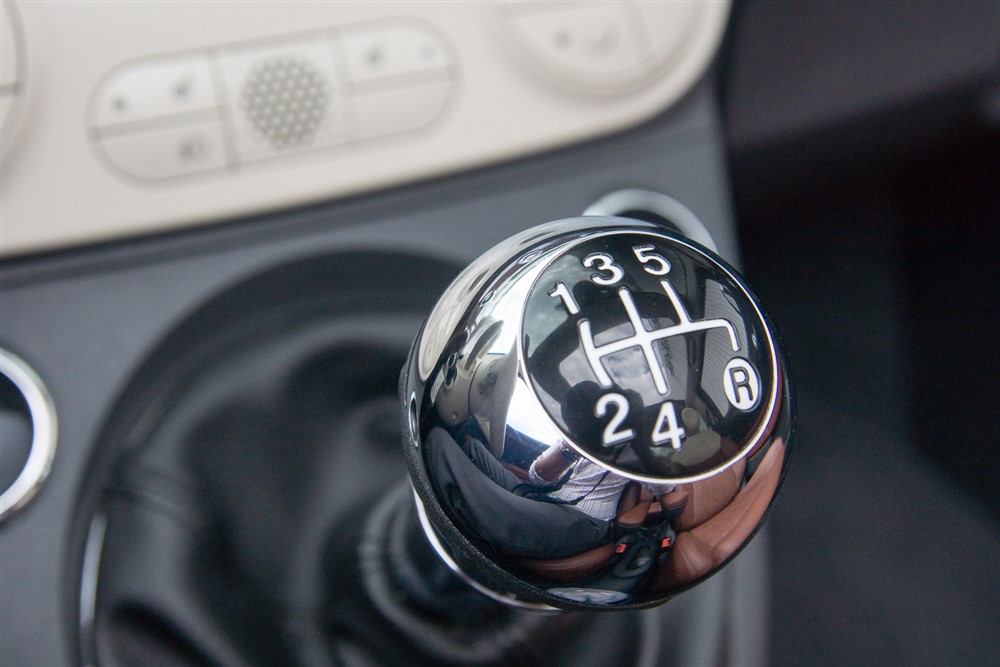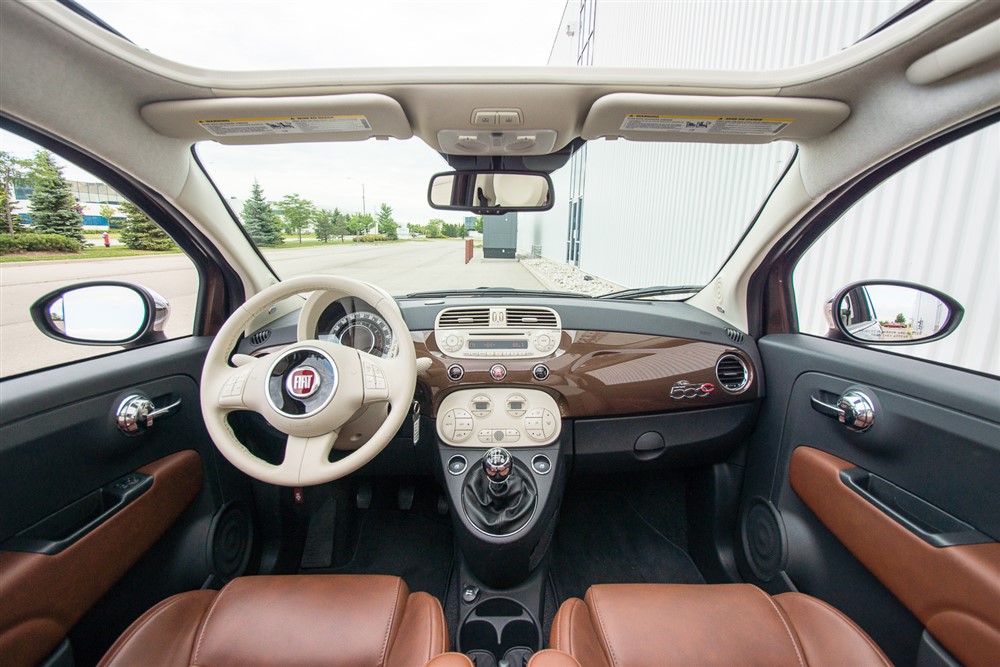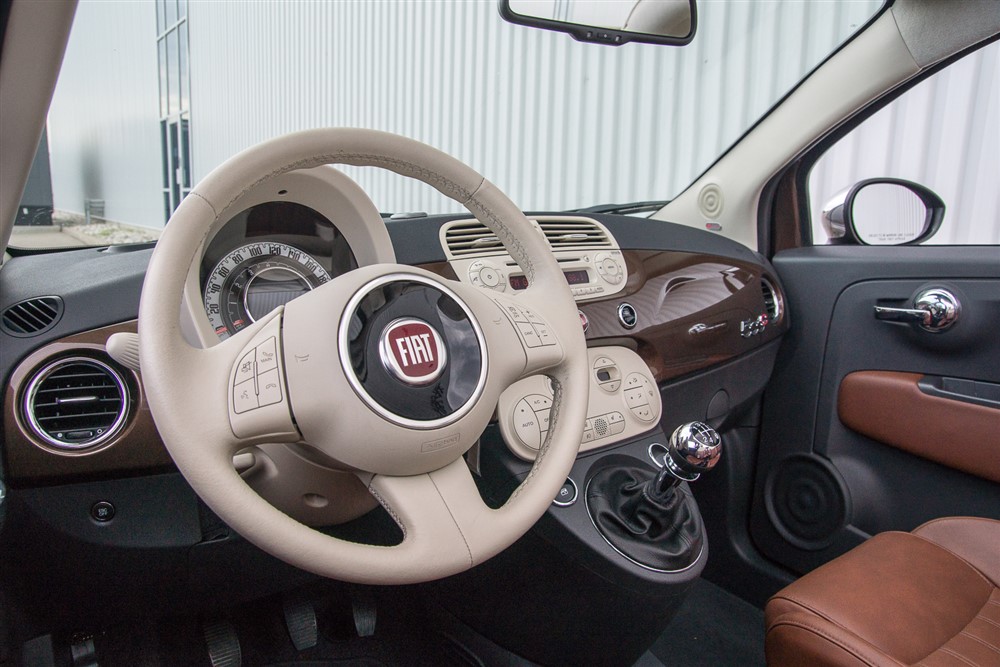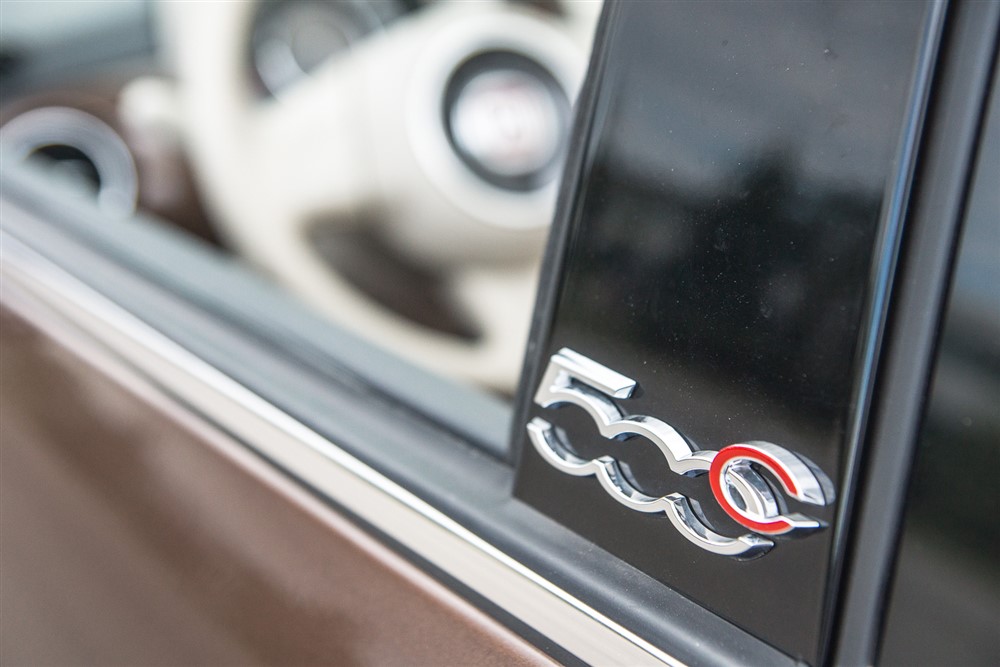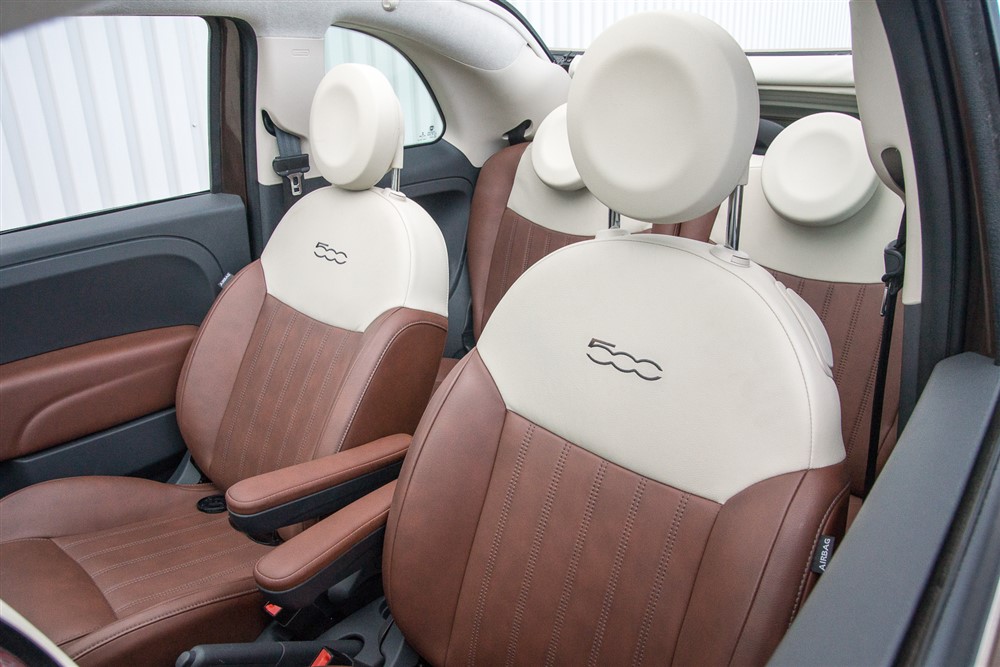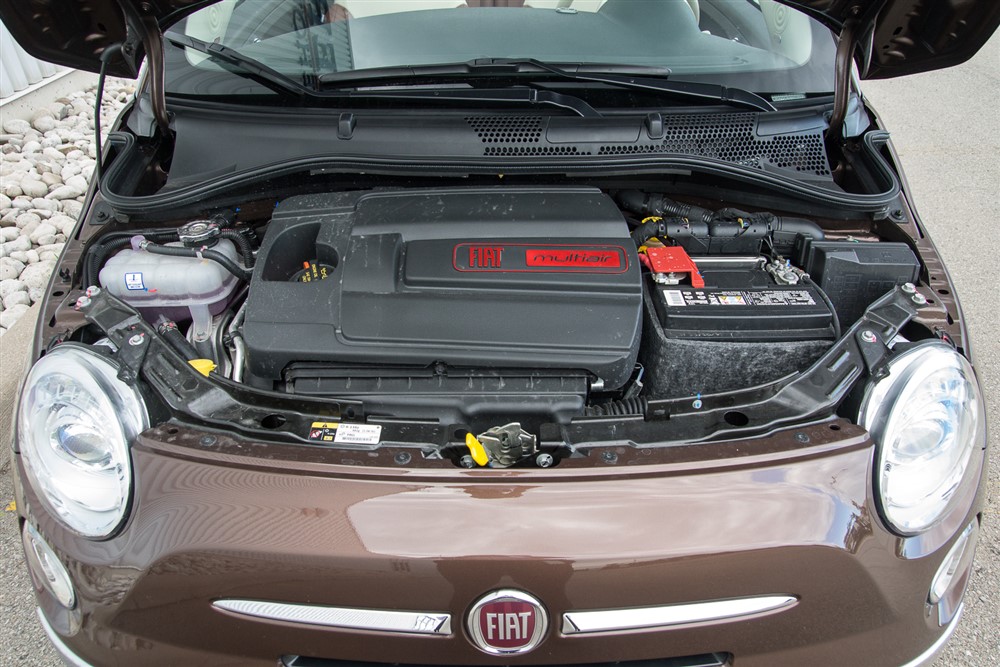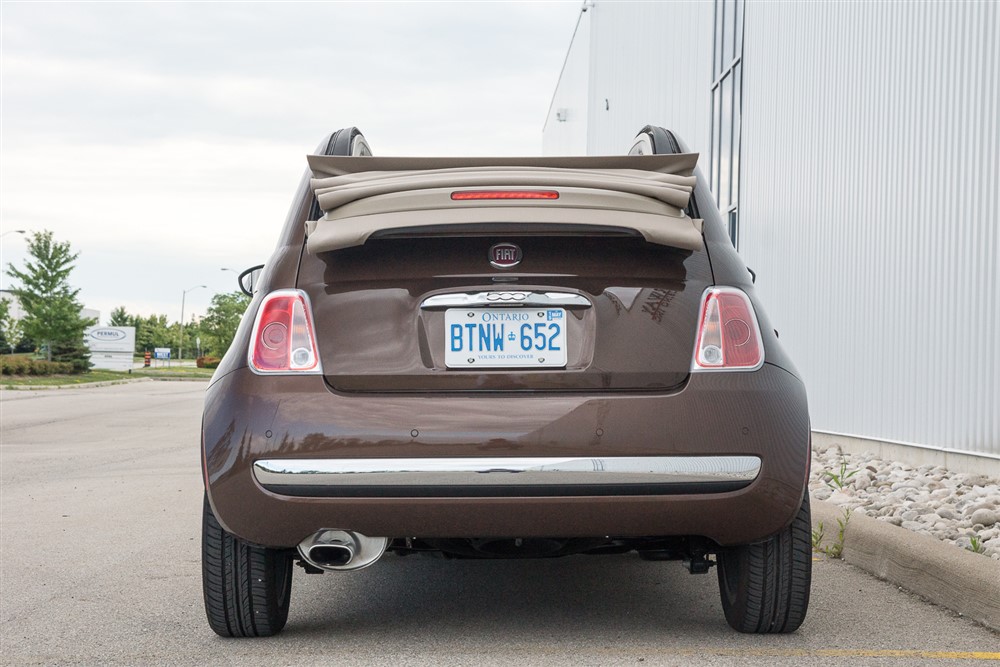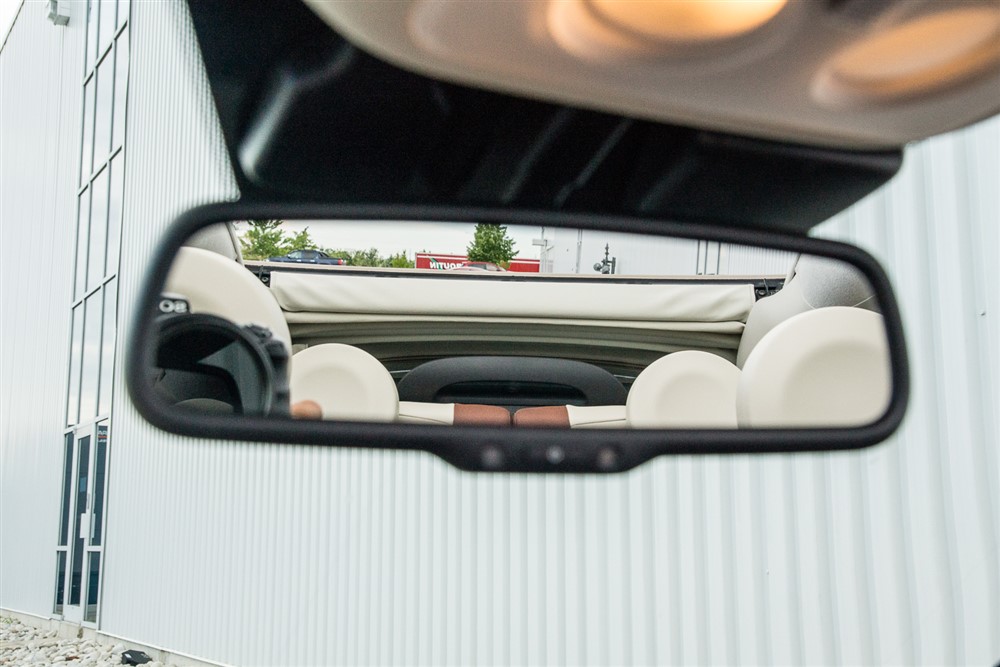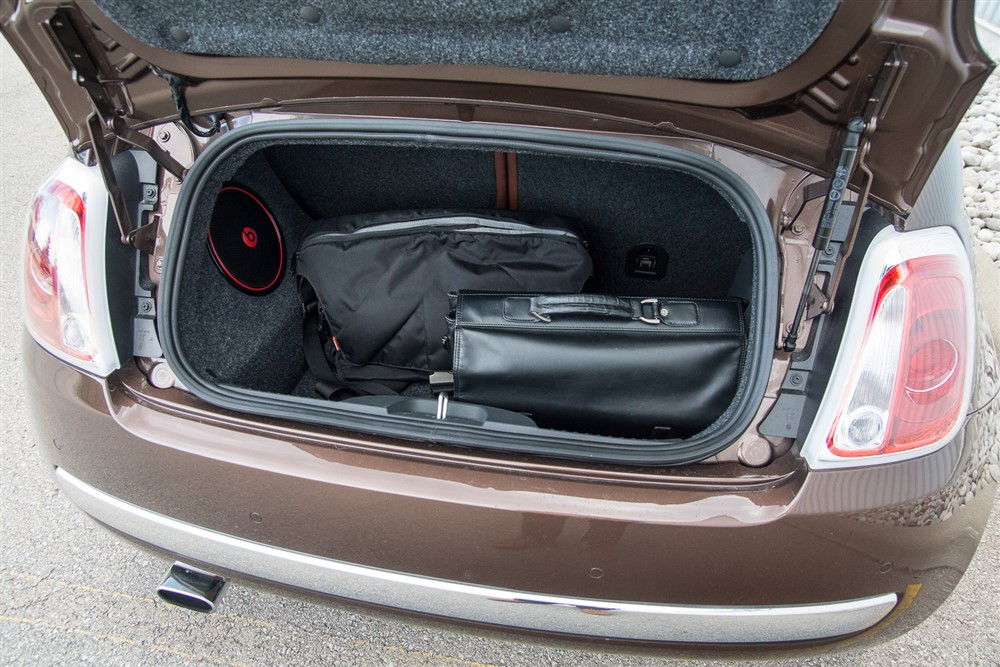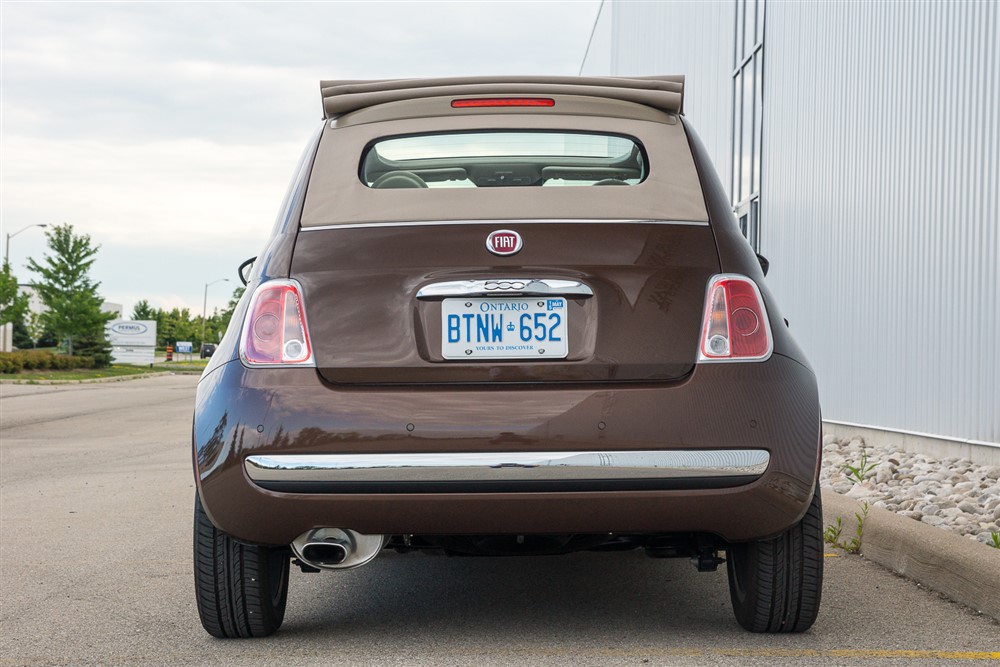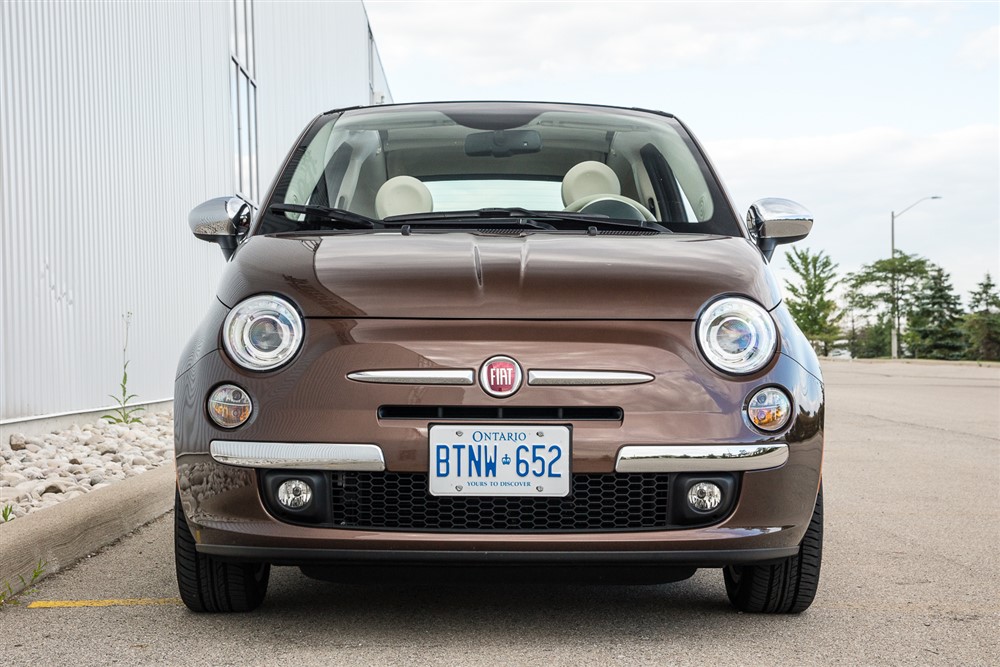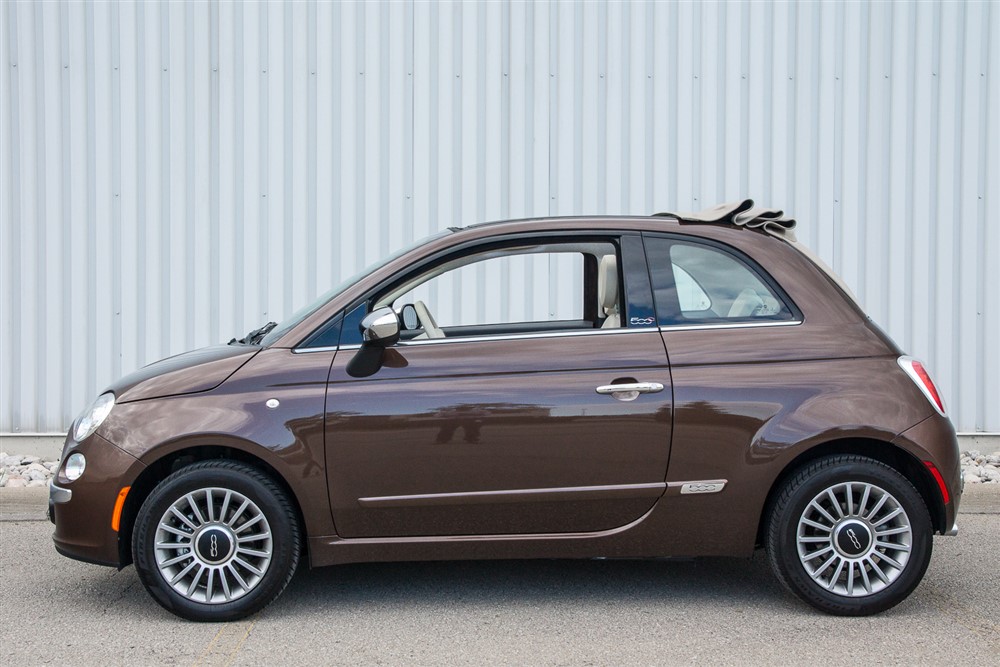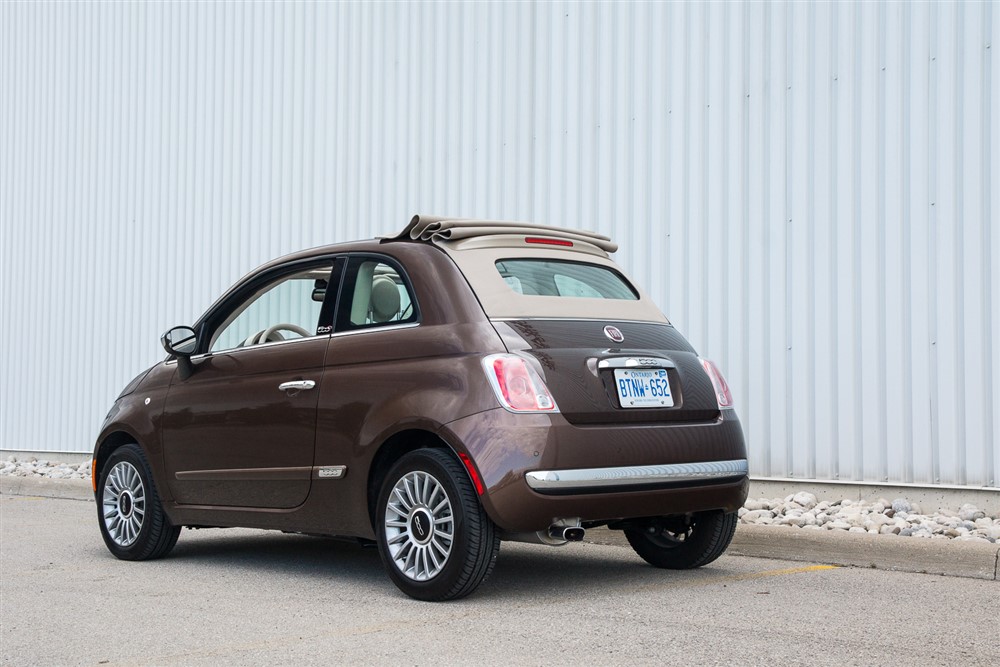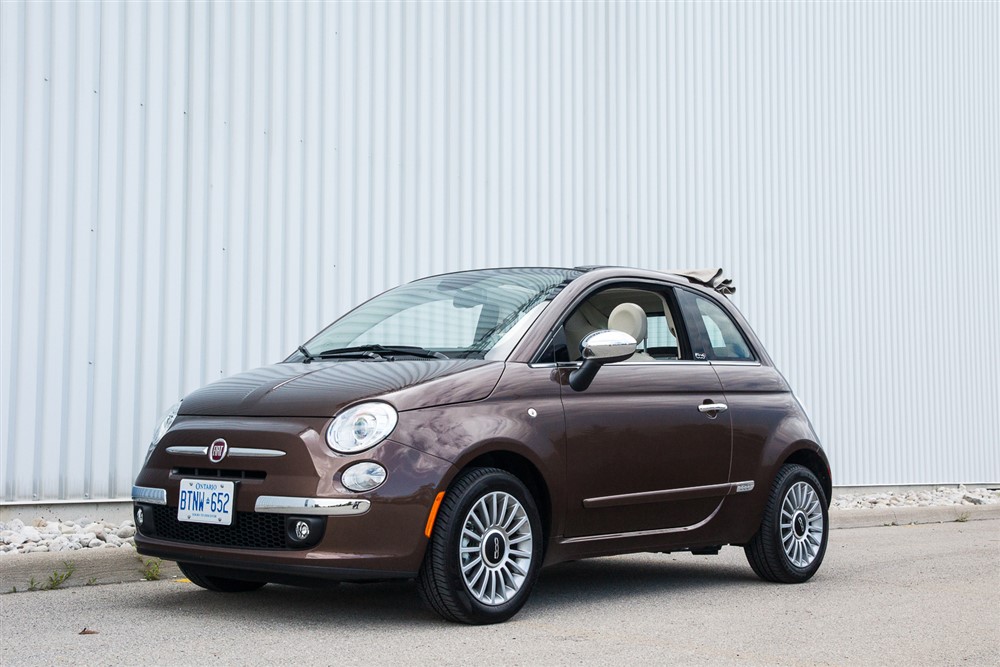Fiat hasn’t been around in North America for about three decades now. Having left the North American market in the early 1980s, many people were left with a poor taste in their mouths, having seen first-hand the inherent lack of build quality in the Italian-built cars at the time. In the almost thirty years, Fiat would make huge strides, growing the company and their world presence, scooping up prestigious nameplates such as Ferrari, Alfa Romeo, and Lancia, among others. They would go on to eventually use the Chrysler Group as their key to getting back into the North American market.
The younger and always-connected generation of today may not necessarily be aware or even care about Fiat’s storied past. However, when something like the 500 comes along, eyes and ears perk up. Debuted as a concept in Europe in 2007, and made available on this side of the pond in 2010, the Fiat 500 was a different take on the small subcompact car. Traditionally placing function well ahead of form, most small cars were sold mostly on the merit of being economical to own. The 500 injected a much-needed dose of Italian flair into the class. Originally available in a standard two-door hatchback configuration, a high-performance edition, and even a retro-styled convertible. I picked up the keys to a 500c convertible painted a very realistic shade of “Espresso”.
First things first: people will generally be buying the Fiat 500 for its interesting blend of small-car practicality and fun sense of style. The 500’s small footprint and cheerful front-end styling garner descriptors such as “cute” from some of my female friends. Would I lose my man-card in this little attractive convertible? No matter, as polarizing as the styling is, the Fiat 500 doesn’t come across as being offensive in the slightest. In an age where every car nowadays seems to want to look angry and aggressive, the 500 is a refreshing change.
Instantly recognizable as a Fiat 500, the convertible manages to retain the 500’s playful shape and unique family styling. The cloth top (and overall styling language) pays homage to the original Fiat 500, seen only in Europe. I think one of the most interesting things about the 500 is its size compared to the European original. The new 500, with its comprehensive safety systems and updated regulation compliance, is a whole 50cm longer than the original 500. Airbags and various passive safety mechanisms all add a lot of size, and consequently, a lot of weight. Compared to the original 500, which weighed only about 1,100lbs, the new 500 is positively porky (relatively speaking) at almost 2400lbs, depending on the trim package you choose.
The retro styling of the exterior carries over into the interior, with a large plastic body-coloured panel running the entire width of the interior. The colour of this panel varies depending on the exterior colour you’ve chosen. The pairing with the dark-brown leather seating surfaces, and the ivory steering wheel and controls make for a thoroughly modern interior. The gauge cluster is not quite ordinary here either. Style definitely played a role in its design, with the speedometer flanking a smaller circular tachometer. In the centre, a multi-function digital display tells you just about everything you need to know. The optional satellite navigation isn’t built into the dash, but rather an attachment that docks onto the top of the dashboard. Powered by TomTom, it looked and felt like an aftermarket unit, and its docking location is a little too close to the driver’s sightlines. One quirk: the toggle for the trip computer is located on the washer fluid stalk.
Interior build quality is acceptable, with no real flaws to report. Harder plastics are the name of the game here, in places like the dashboard top panel and the tops of the doors. The seats themselves are comfortable enough, but the Fiat 500 features what is probably the strangest seating position I’ve had to deal with recently. You sit really high off the ground, in a chair, rather than a seat. In this car – at least in my ideal driving position – my shins below the knee are nearly vertical to the ground. It almost feels like you’re pushing the pedals straight down into the floor, not the bottom of the firewall. Furthermore, the steering wheel doesn’t telescope. This wasn’t a huge deal for me, but I can see how it can be a sore point for others.
The cloth soft top is the other headline feature, building on the car’s overall unique looks. Operable at speeds up to 95km/h, it folds up like an accordion, and can either sit on the roof above the rear passengers, or lowered fully, taking the place of the rear window. One drawback: in its lowest position, your rear-view is obscured by the cloth top.
Headroom isn’t a problem thanks to the tall greenhouse, nor is legroom for the front two passengers. Rear seat passenger legroom will depend on how tall the front passengers are. If they are kind enough to roll the seats forward, smaller friends will be able to join you for lunch. If you have stuff you need to carry, the rear hatchback is a little tight, thanks to the very short rear overhang (the rear wheels are literally at the corners) and the cloth top. If you have the top in its rearmost position, you won’t be able to open the rear hatch. When you pull on the handle, the cloth top will lift up to its middle position before the rear hatch pops open. When it does, you’ll be able to fit four or five regular sized grocery bags. The subwoofer in my test car eats up some space on the left side.
The small car also features a small powertrain. At 1.4 litres, this little gasoline four-cylinder engine puts out 101 horsepower and 98 lb-ft of torque. This doesn’t sound like a lot, but there’s not a lot of car to move. You have a choice of a standard five-speed manual transmission or a six-speed automatic transmission with manual override. For a small city car, the 101-horsepower rating is more than acceptable. There are a handful of cars out there being sold today that come with even less. The five-speed manual transmission is nice to use, once you get used to the somewhat strange clutch engagement. The manual transmission makes driving in the city fun, but I suspect most 500s will be ordered with the optional six-speed automatic. Those who would prefer a little more motivation in their city cars can opt for the midrange Turbo (not available in convertible format), or the very hot Abarth.
The small footprint and modest power output of the 500c come together to return very good fuel efficiency ratings. Chrysler rates the 500c at 6.7L/100km in the city, and 5.2L/100km on the highway. I took advantage of the excellent weather we’ve been seeing lately in Toronto this summer and commuted downtown almost every chance I got. With the top down with lots of city driving, I managed an average of 7.1L/100km. The fuel tank will accept 40L of regular fuel, so while efficiency is good, overall range per tank is a little restricted.
Fiat Canada prices the 500c Lounge at $21,495. For this price, you get a standard five-speed manual transmission, leather seating surfaces, automatic climate control, Bluetooth phone integration, power windows and locks, and fog lamps. Our test car was equipped with the aforementioned satellite navigation add-on and a premium audio system, powered by Beats Audio. The grand total comes to $27,375 for a very well-equipped small car.
Some may scoff at such a dollar value for such a small car, but the attention it gets (mostly from the female gender) is noteworthy. Also, there is something to be said for motoring around the big city on a beautiful day with the top open. Sunroofs are getting bigger and bigger in many cars, but I don’t think they can compete with a proper retractable roof. The 500c Abarth gets my attention as it retains the top-down fun but gives you more masculine race-car inspired touches. I certainly enjoyed my time with the 500c – it more than makes an excellent case for itself for the style-conscious city dweller. It is unique, and about as interesting as it gets as far as small cars go.
2014 Fiat 500C Lounge Gallery







